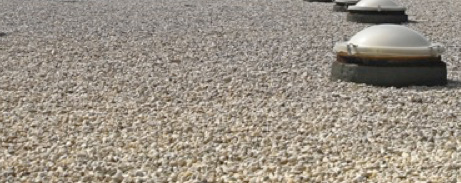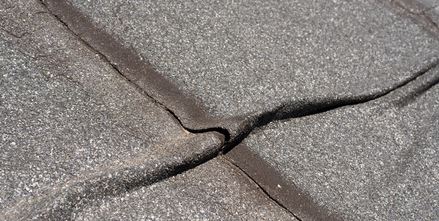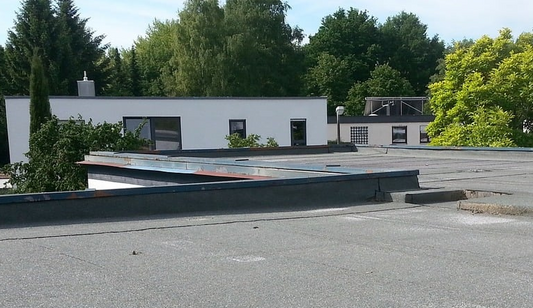You'll need to start by inspecting your shed's decking for signs of weakness, moisture, or flakiness, and replace it if necessary.
Verify the decking is sound and securely fastened to the joists with 60mm screws spaced at 300mm centers.
Lay 18mm OSB3 decking boards at a 90-degree angle to the joists, leaving a 25mm gap between boards and walls for expansion and contraction.
Thoroughly clean the deck, fill any cracks or gaps, and apply a suitable sealant.
With a solid foundation in place, you're ready to take the next steps to achieve a watertight GRP roof that will withstand the elements.
Key Points
- Ensure a solid foundation by inspecting and replacing decking if necessary, and lay 18mm OSB3 boards at a 90-degree angle to the joists.
- Securely fasten decking boards to joists with 60mm screws, staggering joints between each row to prevent water seepage.
- Apply a thin layer of polyurethane adhesive to the back of edge trims and press firmly onto decking boards, securing with 30mm galvanised clout nails.
- Cut fibreglass matting to size, apply a thin layer of resin to the roof deck, and smooth out air pockets or wrinkles.
Inspect and Prepare Decking
Before you start installing your GRP roof, inspect the decking carefully for signs of moisture, weakness, flakiness, or sloping, and replace it if necessary to guarantee a solid foundation for the new roof.
You can't risk installing a new roof on a compromised decking, as it'll lead to structural issues and water damage.
Once you've confirmed the decking is sound, it's time to prepare it for the GRP roof. You'll need 18mm OSB3 decking boards, which provide a durable and stable surface.
Lay the boards at a 90-degree angle to the joists, with the writing side facing upwards, to certify proper alignment and water runoff.
Remember to leave a 25mm gap between the decking boards and the wall to allow for expansion and contraction, and to prevent water from seeping behind the boards.
This attention to detail will certify a secure and long-lasting attachment.
Lay Decking Boards
With the decking prepared, you can now begin laying the 18mm OSB3 decking boards, verifying they're securely fastened to the joists with 60mm screws spaced at 300mm centers.
Start by placing the first board along the center joist, certifying it's aligned with the shed's roof slope. Use a spirit level to check the board's alignment and a tape measure to confirm it's centered.
Next, lay subsequent boards, staggering the joints between each row by at least 300mm to prevent water from seeping through. Use a chalk line to mark the screw positions, then drill pilot holes to avoid splitting the boards. Drive the screws home, making sure they're countersunk to avoid any obstructions.
Work your way outward from the center, maintaining a consistent gap of 2-3mm between boards to allow for expansion. As you lay each board, check the roof's overall squareness and make adjustments as needed.
Fit Edge Trims
Secure the edge trims to the decking boards, guaranteeing a watertight seal around the roof's perimeter.
You'll need to cut the trims to size using a mitre saw or a hacksaw, making sure to allow for a 10mm overhang around the edges.
Next, apply a thin layer of polyurethane adhesive to the back of the trim and press it firmly onto the decking board, making sure it's aligned with the edge.
Use 30mm galvanised clout nails to secure the trim, spacing them about 300mm apart.
Make sure to drive the nails in at an angle to avoid water seeping behind the trim.
As you fit the edge trims, verify they're level and plumb, and that the corners are properly mitred.
You may need to use a combination of nails and adhesive to secure the trims in place.
Once you've fitted all the trims, inspect the edges to guarantee they're watertight and free of gaps.
Any gaps can be sealed with a bead of polyurethane adhesive.
With the edge trims in place, you can now move on to preparing the roof surface for the GRP installation.
Prepare Roof Surface
You'll need to thoroughly clean the roof deck, removing any dirt, debris, or old adhesive residue to guarantee a strong bond between the GRP roofing system and the surface.
Use a stiff broom or a pressure washer to remove loose particles, and then scrub the deck with a wire brush to get rid of any stubborn dirt or grime. Make sure to wear protective gear, including gloves and safety glasses, when using a pressure washer or wire brush.
Next, inspect the deck for any cracks or gaps and fill them with a suitable sealant.
You can use a polyurethane-based sealant or a silicone-based one, depending on the type of deck you have. Verify the sealant is fully cured before moving on to the next step.
Apply Fibreglass Matting
Now that your roof deck is clean and sealed, it's time to lay down the fibreglass matting, which will provide the foundation for your GRP roof.
Before you start, make sure you're wearing protective gear, including gloves, safety glasses, and a mask.
Cut the fibreglass matting to size, leaving a 50mm overlap around the edges of the roof.
Use a roller or brush to apply a thin, even layer of resin to the roof deck, ensuring you cover the entire area.
Carefully place the matting on top of the resin, smoothing out any air pockets or wrinkles as you go.
Use a scraper or trowel to remove any excess resin that squeezes out from under the matting.
Make sure the matting is properly aligned and smooth, as this will affect the final finish of your GRP roof.
Once you've applied the matting, allow the resin to dry completely before moving on to the next step.
Laminate the Roof
With the fibreglass matting in place, apply a second layer of resin to the entire roof surface, making sure to cover the matting evenly. This step is vital in creating a strong bond between the matting and the resin.
Use a roller or brush to apply the resin, working from the centre of the roof outwards to prevent air bubbles from forming. Make sure to apply even pressure to avoid creating unevenness in the laminate.
As you apply the resin, use a squeegee or scraper to remove any excess material. This will help prevent the resin from pooling and guarantee a smooth, even finish.
You can also use a clean cloth or paper towel to wipe away any excess resin that's squeezed out.
Remember to work quickly, as the resin will start to set soon after application. If you notice any areas where the resin is pooling or uneven, use your squeegee or scraper to correct it immediately.
Apply Resin and Consolidate
Following the instructions on the resin container, mix 2kg of resin with 2% catalyst, then apply it generously to the joints and corners of the roof using a brush. Start where the bandage will be placed, making sure to cover the entire area thoroughly.
Once you've applied the resin, use a roller to consolidate it and remove any air pockets. This will guarantee a smooth application and prevent bubbles from forming.
Next, use a paddle roller to remove any remaining air pockets and achieve a bubble-free finish. Make sure to work the resin into all the corners and edges, as these areas tend to trap air.
Take your time and work methodically to guarantee a professional-looking finish.
Remember to let the resin dry or cure completely before moving on to the next step. This is vital, as any imperfections or unevenness will be difficult to correct later on.
Finish With Topcoat
You're ready to apply the topcoat, a critical layer that provides an extra barrier against the elements and enhances the roof's appearance. This layer is essential to guarantee your GRP roof lasts for years to come.
Before applying the topcoat, make sure the resin and consolidating layer are fully cured and dry.
Now, mix the topcoat according to the manufacturer's instructions and apply it evenly to the entire roof surface. Use a roller or brush to spread it uniformly, working from the center outwards to prevent pooling.
Make sure to cover the entire surface, but avoid applying too much, as this can lead to drips and unevenness.
Follow the manufacturer's instructions for application and drying times. Work in small sections to maintain even coverage and prevent pooling.
Avoid applying the topcoat in direct sunlight or during extreme weather conditions.
Final Inspection and Touch-ups
Now that the topcoat is applied, inspect the roof carefully for any imperfections or weaknesses that need attention before it's fully cured.
Look for bubbles, wrinkles, or unevenness and address them immediately. Next, check the roof's edges and corners for any signs of peeling or lifting and reapply topcoat as necessary to guarantee a watertight seal.
Verify that all joints and seams are properly sealed and that there are no gaps or cracks in the GRP roof surface.
To be extra sure, perform a water test by pouring water onto the roof to confirm that it's fully watertight and that there are no leaks.
Make any necessary touch-ups to the topcoat, such as applying additional coats or repairing damaged areas, to guarantee a smooth and even finish.
This is your last chance to catch any mistakes or imperfections before the topcoat is fully cured. By taking the time to inspect and address any issues, you'll be confident that your GRP roof is watertight and ready to withstand the elements.
Rounding Up
Your GRP roof is now installed and ready to protect your shed from the elements.
Double-check your work, making sure all edges are secure and the surface is smooth.
If necessary, apply additional topcoat to guarantee a watertight seal.
Finally, step back and admire your work – you've successfully installed a durable, long-lasting GRP roof that will serve you well for years to come.




